23rd Oct 2020; 11: 40 AM; Windy
Rain fell moments ago. The wind was so intense that I thought at least 50 leaves would fall from the lovely trees near me. To my greatest surprise I could not count 10. This makes me think that nature is very unpredictable. However, I tried to explain this with the idea that trees have their “resistant” day. This implies that there are some days when a tree’s leaves stuck to it and no matter how hard the wind blew, they wouldn’t fall off easily. This is based on the previous observation that wind influenced the shedding of leaves. I further took note that the avocado tree’s leaves fell faster than those of the mango tree. I realized that the avocado leaves were lighter and the mango’s were thicker. The avocado’s were equally larger whereas the mango’s were narrower.
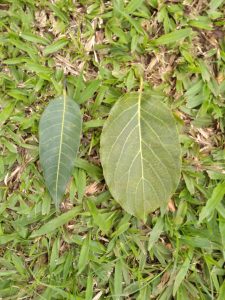
These sit-spot exercises make me more aware of my surroundings and the things growing and developing there. While focusing on the farm beneath the avocado tree, where I had seen those beautiful pollinators, I saw a tree behind the flowers. It’s like this was the first time I was getting to see it. It was grown so it means it had been there for a long time. It was only thanks to this sit-spot engagement that I got to notice it. Is it possible that my eyes fell on it before but I didn’t see it? …I wonder… I was really dazed.

Apart from the ‘invisible’ tree, I saw a peculiar red flower which stood out from the majority which were yellow, white and completely different. I was playing with my Inaturalist app and I saw that this red flower is associated with banana. With this discovery, I was able to create a link in my head with the many banana plants around my sit-spot (Far East). This could most probably be a maturing one. It’s funny that they start by being a flower. I intend to find out more about this. A short distance away from the red (banana) flower was another yellow special one. For a second, I thought this one appeared as a result of the pollination of the simple yellow flowers last time. I’m unsure, but I know it was not there before.
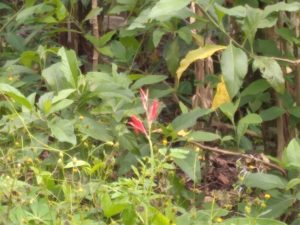
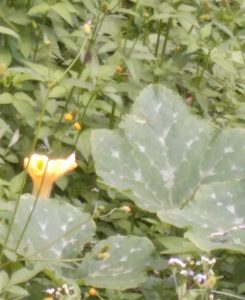
Talking about my squirrels’ tree, it was so nice to see five young birds fledging out of it together at the same time. This answers the question I have had from the on-set. That tree is not a squirrels’ habitat solely. I did not identify any changes on the guava tree. I heard what seemed to be like whispers coming from the field floor. Whenever I turned to look in the direction of the sound, I saw nothing. The organisms responsible for those noises were surely hiding. They were lively. I felt a vibration beneath my feet. I suspected it was one of them, so I lifted up my leg in order not to disturb or harm them. I also saw such a peaceful and still cricket resting on the backside of a brown mango leave. It did not camouflage today? If I was a predator, I would have celebrated. It stayed calm for a long time and disappeared into the grass, afterwards.
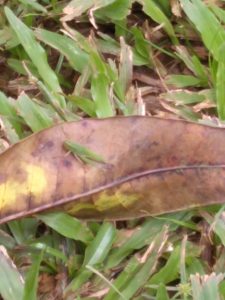
This time around I saw neither a yellow-bellied flycatcher nor a garden acraea. Of course my variegated croton plant was stationed there as always and seeming not to grow, wither or change in any way. Nevertheless, according to me, it did not look as red as it used to. Maybe because I found out from the recent Inaturalist research that it could display many colors.
I made an estimate of a 1m2 plot in the downhill farm. Here, cassava (Manihot esculenta) was growing. I was going to be fast to say that they were all the same but with the consciousness of the thinking-small process, I saw that some had purple flowers on them while others did not. In addition to that, some were way taller than others. I assumed the conditions under which they were growing to be same, especially for those growing very close to each other. So, why was that the case? This reminds me of the experimental question we discussed in class which even came in a test, whereby we had to distinguish if such structural differences were as a result of phenotypic plasticity or genetic variation. If indeed both tall and short cassavas grew under the same environmental conditions, then it is variation. I believe there are earthworms in the soil of the square plot. There is also decomposition of dead leaves and excreta of animals that frequently pass there. With a small ecosystem, it is easier to focus since the amount of activities are limited. More attention is paid to each entity.
This episode was overwhelming. I was carried away by a lot of happenings. In addition to all of the above, I saw a yellow bird on a palm. Following the advice that we should visit our sit-spot at other times, I remember seeing a similar yellow bird on a different palm. This made me strongly think that they have a connection with palm leaves. I tried searching online and found that a group of birds called Palm Warblers have yellow colors and they chant, so, I also have an idea of the birds that contribute significantly to the bird music I hear almost every time. To conclude, I would like to share pics of a big black bird I saw, who seems to live on a dry tree South-East of my sit-spot.
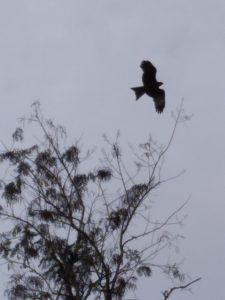
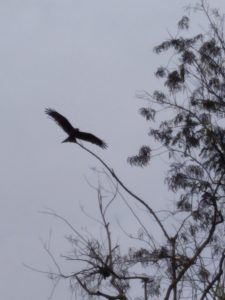
12:55 AM

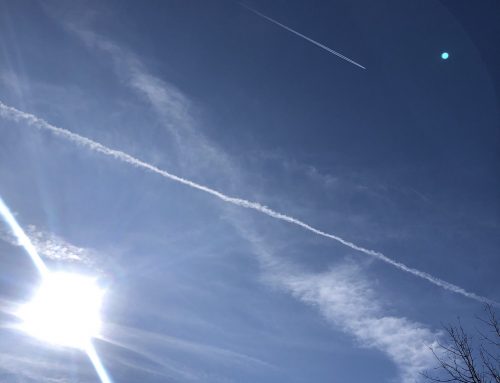
I had a similar “invisible” tree experience, up until last week, I did not notice a beautiful tulip poplar growing in my sit spot! I really like the way you write, it is so precise and obvious that so much work and research goes into your work! I also looked up the Palm Warbler and it is such a beautiful bird, it’s so neat that you got to see it!
We have been getting tons of rain in my area too! You did a wonderful job adding in so much detail.
Lovely post Sheki – it is funny how just paying attention we see things that were always there and then we scratch our heads and wonder how could we have missed it….and then you start wondering what else are you missing! good work!